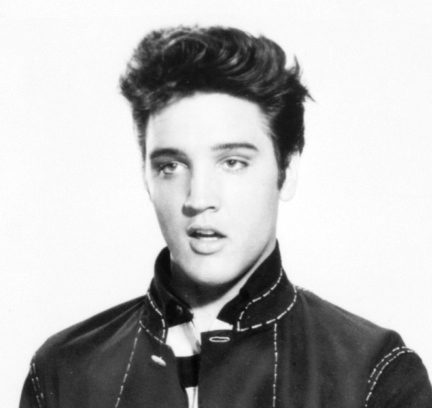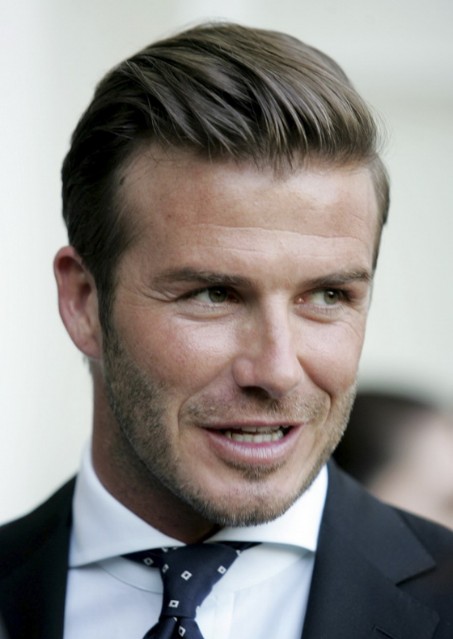50 s Mens Hairstyles Biography
Source:-Google.com.pk
The hairlessness of humans compared to related species may be due to loss of functionality in the pseudogene KRTHAP1 (which helps produce keratin) in the human lineage about 240,000 years ago.Mutations in the gene HR can lead to complete hair loss, though this is not typical in humans.In order to comprehend why humans are essentially hairless, it is essential to understand that mammalian body hair is not merely an aesthetic characteristic; it protects the skin from wounds, bites, heat, cold, and UV radiation.Additionally, it can be used as a communication tool and as a camouflage.To this end, it can be concluded that benefits stemming from the loss of human body hair must be great enough to outweigh the loss of these protective functions by nakedness.Humans are the only primate species that have undergone significant hair loss and of the approximately 5000 extant species of mammal, only a handful are effectively hairless. This list includes elephants, rhinoceroses, hippopotamuses, walruses, pigs, whales and other cetaceans, and naked mole rats.Most mammals have light skin that is covered by fur, and biologists believe that early human ancestors started out this way also. Dark skin probably evolved after humans lost their body fur, because the naked skin was vulnerable to the strong UV radiation as would be experienced in Africa. Therefore, evidence of when human skin darkened has been used to date the loss of human body hair, assuming that the dark skin was needed after the fur was gone.It was expected that dating the split of the ancestral human louse into two species, the head louse and the pubic louse, would date the loss of body hair in human ancestors. However, it turned out that the human pubic louse does not descend from the ancestral human louse, but from the gorilla louse, diverging 3.3 million years ago. This suggests that humans had lost body hair (but retained head hair) and developed thick pubic hair prior to this date, were living in or close to the forest where gorillas lived, and acquired pubic lice from butchering gorillas or sleeping in their nests.The evolution of the body louse from the head louse, on the other hand, places the date of clothing much later, some 100,000 years ago.Balding, where terminal hair switches to vellus hair, usually occurs at around thirty to forty years of age. In prehistoric times, most individuals did not survive to adulthood, let alone reaching their fourth decade and therefore balding tends to act as a signal of maturity. In women survival to such an advanced age is usually coupled with a decrease in a fertility (see menopause), but in men fertility is retained beyond middle-age. The persistence (but non-ubiquity) of balding in men, coupled with its general absence in women, suggests that there was a selection pressure against balding in women (perhaps in the form of a pressure against signals of advancing age), but variations in hair patterns among men did not prevent their reproductive success leading to stable polymorphisms (perhaps representing different mating strategies); for example some men could have benefitted from baldness by signalling advanced maturity and social status; while other men simulated the appearence of youth and vigor by retaining their hair.The soft, fine hair found on many nonhuman mammals is typically called fur.Most species evolved as the climate in Africa changed, to adjust their thermoregulation to the intense UV and sunlight at the equator, mostly by panting. Early hominids likely possessed fur similar to other large apes, but about 2.5 million years ago they developed a greater distribution of sweat glands[citation needed] that enabled them to perspire over most of the body. It is not clear whether the change in body hair appearance occurred before or after the development of sweat glands. Humans have eccrine sweat glands all over their bodies. Aside from the mammary glands that produce a specialized sweat called milk, most mammals just have apocrine sweat glands on their armpits and loin. The rest of their body is covered in eccrine glands. There is a trend in primates to have increased eccrine sweat glands over the general surface of the body.It is unclear to what degree other primates sweat in response to heat, however.The 1950s was a decade known for experimentation with new styles and culture. Following World War II and the austerity years of the post-war period, the 1950s were a time of comparative prosperity, which influenced fashion and the concept of glamour. Hairstylists invented new hairstyles for wealthy patrons. Influential hairstylists of the period include Sydney Guilaroff, Alexandre of Paris and Raymond Bessone who took French hair fashion to the Hollywood, New York and London, popularising the artichoke cut, the pixie cut and bouffant hairstyles.
The American film industry, and popular music industry influenced hairstyles around the world, both in mainstream fashion and teenage sub-culture. With the advent of the rock music industry, teenage culture, and teenage fashion became increasingly significant and distinctive from mainstream fashion, with American style being imitated in Europe, Asia, Australasia and South America. Teenage girls across the world wore their hair in ponytails while teenage boys wore crew cuts, and the more rebellious favoured "greaser" comb-backs.The development of hair-styling products, particularly setting sprays, hair-oil and hair-cream, influenced the way in which hair was styled, and the way in which people across the world wore their hair, from day to day. Women's hair styles of the 50s were in general less ornate and more informal than those of the 40s, with a "natural" look being favoured, even if it was achieved by perming, setting, styling and spraying. Mature men's hairstyles were always short and neat, and generally maintained with hair-oil. Even among "rebellious youth" with longer greased hair, carrying a comb and maintaining the hairstyle was part of the culture.
50 s Mens Hairstyles Free Pictures Pics Images Photos 2013
 50 s Mens Hairstyles Free Pictures Pics Images Photos 2013
50 s Mens Hairstyles Free Pictures Pics Images Photos 2013
 50 s Mens Hairstyles Free Pictures Pics Images Photos 2013
50 s Mens Hairstyles Free Pictures Pics Images Photos 2013
 50 s Mens Hairstyles Free Pictures Pics Images Photos 2013
50 s Mens Hairstyles Free Pictures Pics Images Photos 2013
 50 s Mens Hairstyles Free Pictures Pics Images Photos 2013
50 s Mens Hairstyles Free Pictures Pics Images Photos 2013
 50 s Mens Hairstyles Free Pictures Pics Images Photos 2013
50 s Mens Hairstyles Free Pictures Pics Images Photos 2013
 50 s Mens Hairstyles Free Pictures Pics Images Photos 2013
50 s Mens Hairstyles Free Pictures Pics Images Photos 2013
 50 s Mens Hairstyles Free Pictures Pics Images Photos 2013
50 s Mens Hairstyles Free Pictures Pics Images Photos 2013
 50 s Mens Hairstyles Free Pictures Pics Images Photos 2013
50 s Mens Hairstyles Free Pictures Pics Images Photos 2013
 50 s Mens Hairstyles Free Pictures Pics Images Photos 2013
50 s Mens Hairstyles Free Pictures Pics Images Photos 2013
 50 s Mens Hairstyles Free Pictures Pics Images Photos 2013
50 s Mens Hairstyles Free Pictures Pics Images Photos 2013










No comments:
Post a Comment